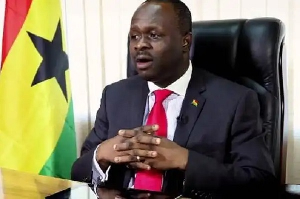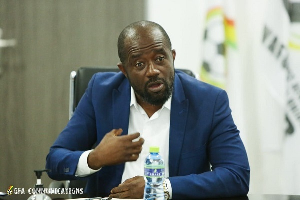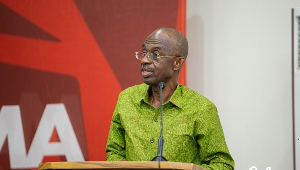To all authors worldwide, I say ‘good work done’. This piece is as part of my ‘little’ contribution towards writing error-free science textbooks for our students. The entire write-up focuses on using capital letters appropriately in scientific writing especially in metrology (science of measurement). Examples, usually involving misuse of capitals, are taken from works of some known authors. No author’s name has been used out of schadenfreude, but the aim is to highlight some avoidable errors.
We start from how to type/write the results of measurement. The magnitude or value of the measure determined either directly from reading a measuring instrument or indirectly from calculation is followed by ‘a space’ and then by ‘the symbol for the unit’ of measure (ie, 5 m and not 5m or 5 metres). Never write/type a unit name after a number when the two represent a value of measurement; ie, the length of the rope is 20 m and not 20 metres. The exception is when the number and symbol are used adjectivally (eg ‘20 m rope’ and ‘20-metre rope’ are both correct). Always insert a space between the number and the unit symbol (eg, 100 MW power plant and not 100MW or 100-MW power plant). The word ‘metre’ is the unit name but ‘meter’ is the measuring device (eg, energy meter—the one that records the amount of electricity consumed). Avoid the American style where ‘meter’ is used for both instances.
In Adwinsa Social Studies Atlas for basic schools, the authors violated these rules (eg, 115,400 hectares instead of 115 400 ha & 1,500-2,000mm instead of 1500–2000 mm). The last example, 1500–2000 mm, provides two additional pieces of useful info. First, a range is better indicated with an ‘n dash’ and not with a hyphen. Second, a space is used as a thousands separator in scientific measurement and no longer a comma (eg, 114 000 ha and not 114,000 ha). The space is inserted only when the digits are five or more (eg, 4500 N but 45 000 N). The number and the unit symbol must both appear on the same line of text.
Justifiably, capital letters are used to symbolize units of measure named in honour of pioneering scientists. Here, the unit names, when written in words, are treated as common nouns, but the symbols are written as capitals (eg, newton—N, watt /wot/—W and pascal—Pa). For this reason, the lowercased and uppercased forms of the same letters are used as symbols for units of different physical quantities (eg, 10 s /ten seconds/ is a measure of time; but 10 S /ten siemens/ is a measure of conductance). The unit name ‘siemens’ has a capitalized symbol because it honours Werner von Siemens, a German inventor.
One of the worst errors that keep recurring in BECE and in nearly all the basic level textbooks describing temperature measurement is the symbol for degrees Celsius (?). The symbol for degree Celsius is a single character just as the letter ‘A’, ie, the degree symbol and the ‘C’ are inserted at once and not typed separately. (Look for the correct symbol under Symbols. Alternatively, press the keyboard shortcut ‘alt + =’ and look at the Ribbon /ribin/ to see several mathematical and scientific symbols under the Page Layout tab. Locate the symbol there.) The ‘C’ in the word Celsius, a patronym honouring the Swedish astronomer Anders Celsius, must always be capital: Temperature is measured in degree Celsius.
Therefore, typing ‘o’ and ‘C’ separately and then superscripting the ‘o’ is inappropriate. The worse case is typing and superscripting zero as in 20 0C. Both preceding wrong forms are common in BECE maths and integrated science. The oddest form is seen in Adwinsa Social Studies Atlas for basic schools where ‘O’ is made a superscript followed by a space and a ‘c’ (ie, 28O c in page 15; compare 28 ?). Pardon me if Ghanaweb inappropriately displays the symbols. (You may send me a text for the original version.)
A notable and justifiable exception in the use of capital letters is the use of ‘L’ instead of ‘l’ for the non-SI of volume ‘litre’, which does not represent the name of any scientist. The reason is that, the small ‘l’ resembles the numeral for one (1) when both are typed in New Times Roman (the most widely used font style). Consequently, using a capital letter for any unit of measure without either of these bases is an error. Avoid!
One of such avoidable misuse of capital letters is seen in ICT where the unit ‘byte’ referring to 8 bits is often wrongly symbolized as ‘B’ (eg, KB, MB and GB). The unit name ‘byte’ was coined by Werner Buchholz, who deliberately respelled ‘bite’ as ‘byte’ to avoid accidental mutation to bit. Therefore, the name byte is a common noun that honours no scientists. In consequence, capitalizing its symbol as ‘B’ is a technical error. In contrast, the unit of loudness, decibel, is symbolized as dB, in which ‘d’ is deci and ‘B’ is derived from the name of Graham Bell, the inventor of telephone). Thus, Kb, Mb and Tb are technically justifiable, but KB, MB and TB are simply errors. And the problem is with only the ‘B’ which must always be ‘b’.
Still on metrology, we look at how capitalizing a letter changes its meaning (eg, 10 mA is /10 milliamperes/, but 10 MA is /10 mega-amperes/). Also compare pb = picobyte and Pb = petabyte). What have you noticed? The simple rule is that the symbol for any SI prefix whose value is less than or equal to 1000 is a small letter [eg, milli (m), centi (c), deca (da), hecto (h) and kilo (k)], while those greater than 1000 are represented by capital letters [eg, mega (M) = 1000 000]. An SI prefix is a prefix used with units of measure to form multiples.
For your reminder, a slight difference exists in the values between SI prefixes as used in the other sciences and as they are used in ICT. The other sciences use the base 10 system, but ICT uses the binary system. Therefore, while a kilometre refers to 1000 m because the prefix kilo is 10 raised to the power 3, in ICT, a kilobyte is 1024 bytes because it (Kb) is 2 raised to the power 10. Here, notice that the value of kilo as in kilobyte is more than 1000; hence, the ‘K’ and not ‘k’. Technically, the prefix is ‘kibi’ and not kilo. But because many things are historically named, we continue to manage the terms kilo, mega, giga and tera in ICT even though their true values are ‘2 raised to the power 10, 20, 30 and 40’ respectively, making them bigger than those in the other sciences.
Two useful reminders particularly to Waec (sorry WAEC) are that the abbreviation ‘SI’ (referring to the International System of Units) must be typeset in a specific way. First, it has no internal full stop. Second, it must appear in roman typeface, ie, the letters must stand upright. In other words, we don’t italicise /i-ta-li-saiz/ the letters ‘SI’ (ie, we don’t typeset ‘SI’ in italics /i-ta-liks/). Worthy of noting is that the process of converting upright letters to forward slanting ones is italicization /i-ta-li-sai-za-sion/. (Please look up the words ‘italicize’ and ‘italics’ in your dictionary, noting the correct pronunciation. Frequently, I do hear people say ‘italise’ /ai-ta-lais/, a word that is most likely non-existent. Check it up!)
In the same vein, some symbols in science are written/typeset in some specific forms (eg, pH). Two things are worth noting. First, ‘pH’ should never begin a sentence, because the ‘p’ must always be a small letter. Second, press the keyboard shortcut ‘ctrl + z’ to return the ‘p’ as small and the ‘H’ as capital anytime word processors defaultly convert pH into ‘Ph’. This same practice applies to ordinal indicators (letters written attached to a number telling us that the number shows position, eg, ‘st’ and ‘nd’ as in 21st and 22nd), ie, MS Word by default converts ordinal indicators into superscripts. Return them to baseline as in ‘3rd' by pressing ‘ctrl + z’.
From the above, we learn that capital letters must all be used academically. Justifiably, capital letters are used to begin the names of proper nouns and all other words at the beginning of sentences. But the minor /maina/ question is ‘Are all proper nouns capitalized? No! Good examples are those CamelCased words beginning with small letters (eg, iPad, iPhone and eBay). These words are proper nouns because they are trademarks. Therefore, beginning any of them with a sentence will require that we capitalize it, but this practice will violate copyright laws. Beginning them will small letters at the start of sentence also violates grammar. What do we do?
—Strike a balance. Recast your sentences to move these words from the beginning position (compare: eBay is the best online marketing site. & The best online marketing centre is eBay.) Always remember to write ‘Internet’ and not internet.
Appreciate this? Thank a teacher. Appreciate this? Drop a comment. Interested in a copy? Drop your email or send me a text.
Long live practising teachers! Long live Kwame Nkrumah’s Ghana!
Idris Pacas: 020 910 153 3 & iddrisuabdulai12@yahoo.com
Opinions of Monday, 7 July 2014
Columnist: Pacas, Idris


















